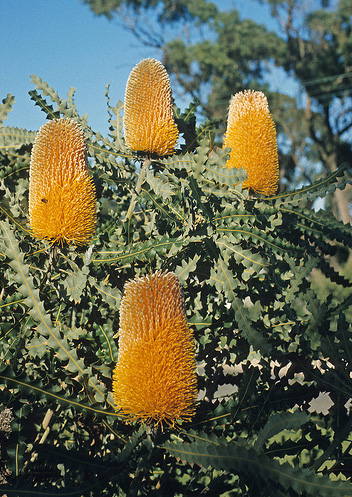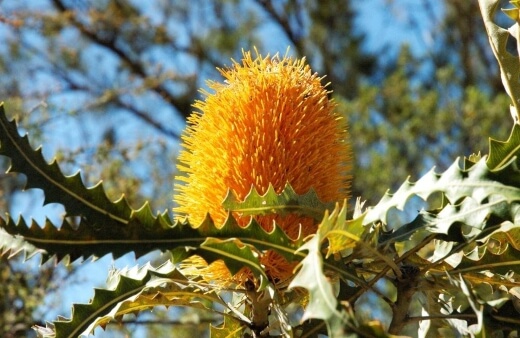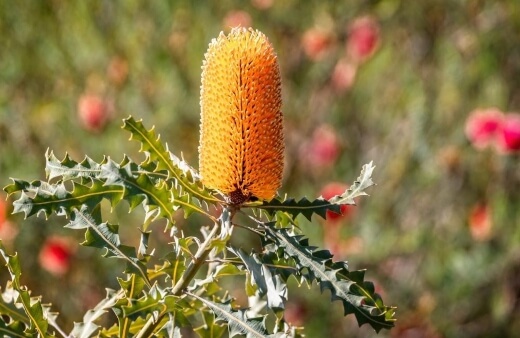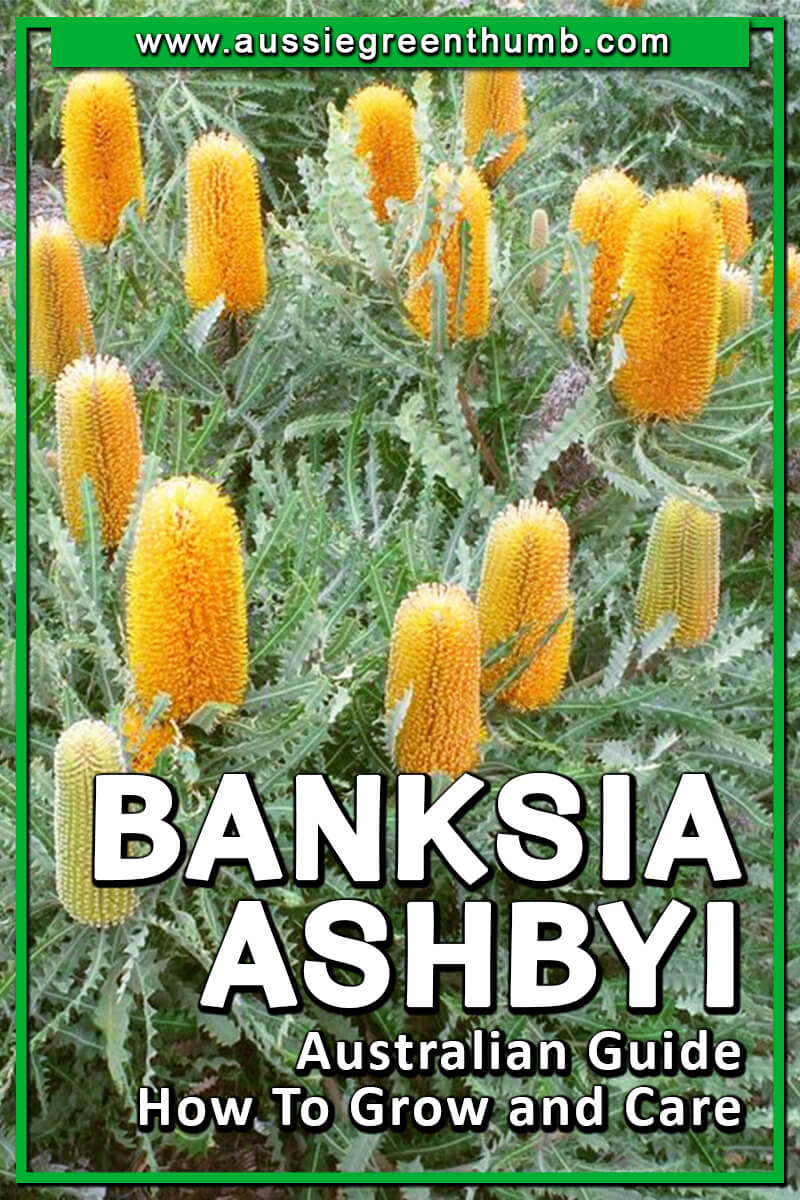The Banksia ashbyi is a great choice for Australian gardeners who are looking to plant a highly ornamental, endemic plant. This well-known wildflower offers a dense, domed growth habit and wonderfully bright orange blooms.
Ideal for dry and arid areas, the ashbyi requires little additional care and can handle some occasional neglect. Our grow and care guide will give you everything you need to know about growing, propagating, and caring for Banksia ashbyi.
More...
What is Banksia ashbyi?
Genus: Banksia
Species: B. ashbyi
Family: Proteaceae
Common Name: Ashby’s Banksia
Flower Colour: Orange
Foliage Colour: Green
Growth Habit: Shrub to 2m (Northern WA Variety), Small Tree to 8m (Southern WA Variety)
Flowering: Later winter to Spring

Part of the Proteaceae family, the Banksia ashbyi is one of the many native Banksia species. As with other Banksia species, the ashbyi variety produces large cylindrical flower spikes and dark green foliage.
There are two types of the ashbyi plant. A smaller growing variety grows natively in the northern regions of WA – growing as a shrub reaching around 2 metres in height.
A smaller tree variety of the ashbyi plant is often found in the southern regions of WA – reaching around 8 metres in height. It is also possible to grow a Banksia ashbyi dwarf variety which is a low-growing, dense ground cover.
As the Banksia ashbyi is a rich nectar source, it offers a great opportunity to invite nectar-feeding birds and other native fauna to your garden.
While Banksia’s had been donned their name as a tribute to the well-known botanist Sir Joseph Banks, the Ashby’s Banksia was named after Edwin Ashby, a famed wildflower grower who cultivated a lot of this species.
How to Grow Banksia ashbyi

No matter where you decide to grow your Ashby's Banksia, it will offer a wonderful colour and texture to your landscape. If planning on growing Banksia ashbyi dwarf varieties, it’s ideal for edging around patios and pools or as a border plant for flower beds.
It is important to note that this cultivar can have strong, invasive roots. As such, it is not recommended to plant your ashbyi near major pipes or main connections.
This Banksia species is best suited for dry climates. For growers planning on planting the ashbyi in regions that experience high summer humidity, you may struggle with this cultivar.
It will require extra attention to the soil. It is moderately frost tolerant, so you won’t need to worry about over-wintering this species.
Plant into well-draining, lime-rich soil for ideal results. If trying to grow in a pot, you will need to ensure a loose, rapidly draining pottery mixture.
Choose a spot that receives ample sunlight throughout the day. For a full bloom, the Ashby's banksia does need full sun, around 6 hours per day.


Get Your Free Guide:
Master Growing Australian Natives eBook
A Must Have Complete Guide for Every Australian Garden
Get Your Free Guide:
Master Growing Australian Natives eBook
A Must Have Complete Guide for Every Australian Garden
Propagating Banksia ashbyi
Propagating by means of cutting can be incredibly tricky, which is why propagation through seed is recommended. Seeds can be obtained from plants post-flowering or from native nurseries.
Seeds can be grown in a seed tray, small container or sown directly into the ground. You will need to:
- Sow seeds during Spring or Autumn. Avoid sowing during the hottest or coldest parts of the year.
- Sow the seed into a vermiculite mixture, pressing lightly into the soil.
- Keep the soil gently moist, perhaps by means of a mister, without letting it get wet enough to develop mould.
- Germination will take around 21 to 60 days.
Banksia ashbyi Care Guide

In general, banksias don’t require too much care or attention once they are established. They respond well to infrequent deep watering. In rainy seasons, it is advised to cut back on any additional watering and keep an eye on your soil to ensure it is draining well.
A slow-release native fertiliser can be added annually. Avoid overwatering as this can often lead to fungal infections.
When growing Banksia ashbyi, occasional pruning can be done to control the shape and remove spent blooms – especially if you are not hoping to harvest seeds.
However, they don’t respond well to light pruning. More so, pruning too aggressively can affect flower production and damage the wood of the branches.
Take care when pruning, and be sure to use a sterilised pair of gardening shears to avoid the spread of pests and diseases. If you don't have one yet, check out our review of the best garden shears available online.
Although largely pest and disease tolerant, some issues can occur.
Banksia FAQ’s

Source: Lullfitz.com.au
Are banksias fast-growing?
Banksias are not considered to be overly fast-growing, and, especially when being propagated from seed, it can take 5 to 10 years before your plants begin to bear flowers.
Are Banksias Edible?
The flower spikes produce wonderfully sweet nectar, which can be pressed or sucked out of the petals. The petals can also be soaked in warm water to create a sweet tea or drink.
Can Banskias Be Transplanted?
Banksias can be transplanted, but it is not recommended to do it too often as it can damage the root system. When planting, dig a hole twice the size of the root ball, loosen the soil and plant your banksia, gently patting down the soil to remove air pockets.

Get Ready to Start Growing Banksias Today!
Be sure to keep an eye on your soil – especially in more humid environments. While often grown for their ornamental flare, the Ashby’s Banksias also makes a great choice for cut flowers.
Follow these tips, and you’ll have wonderfully blooming Banksia ashbyi in your garden.
Published on November 20, 2021 by Gary Clarke
Last Updated on January 18, 2025




